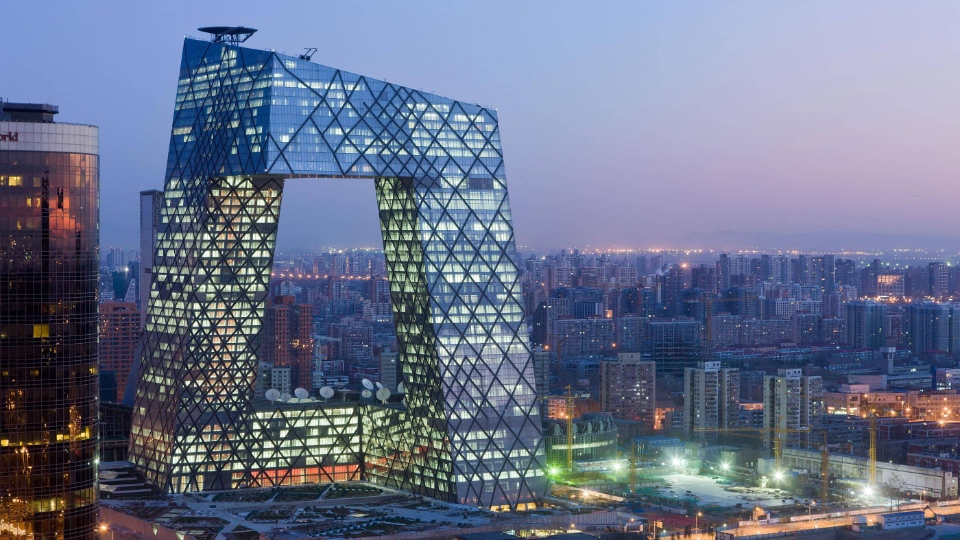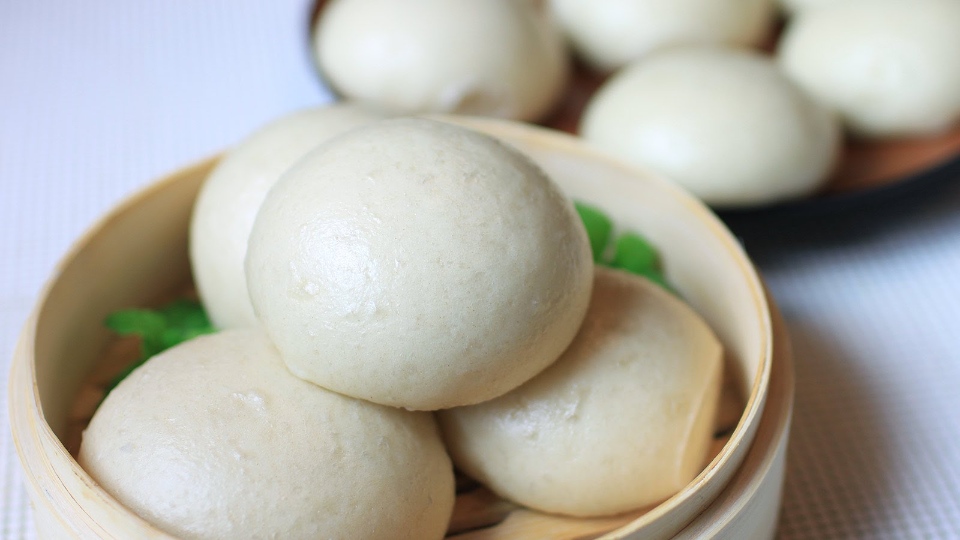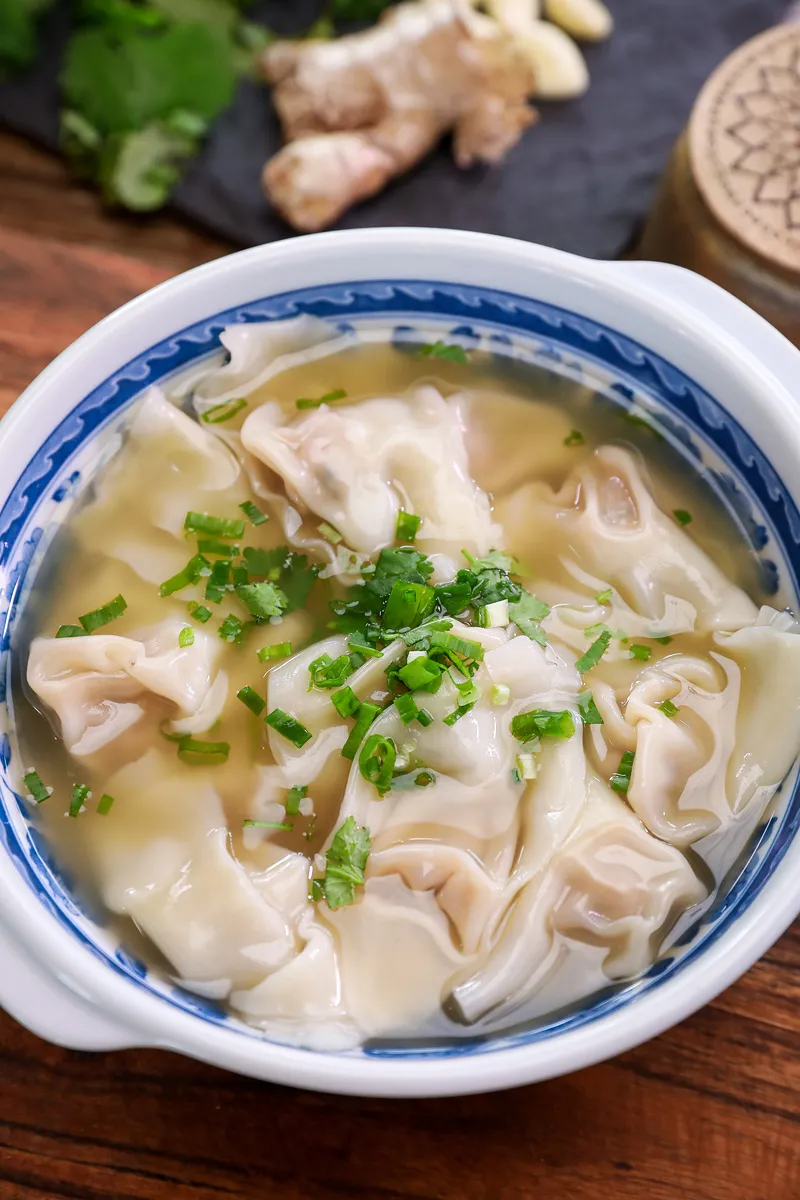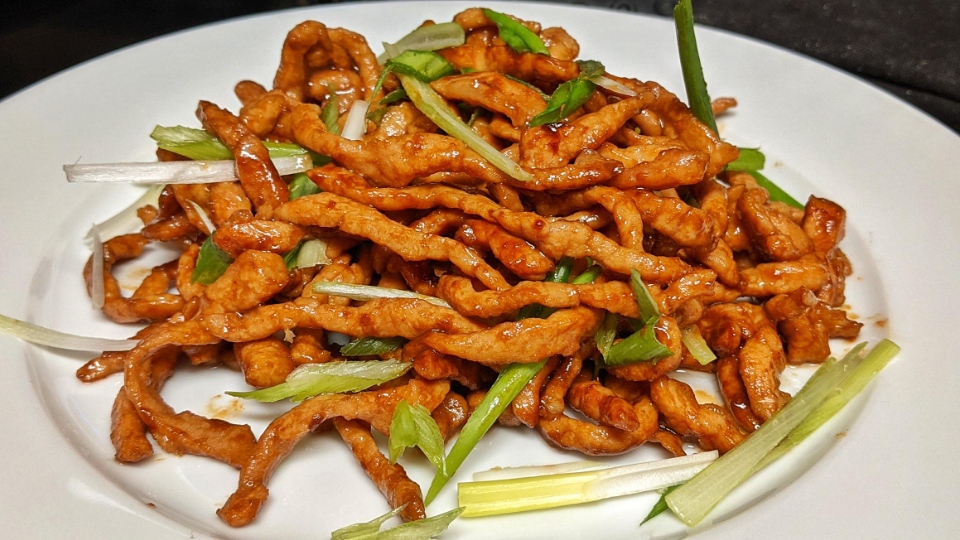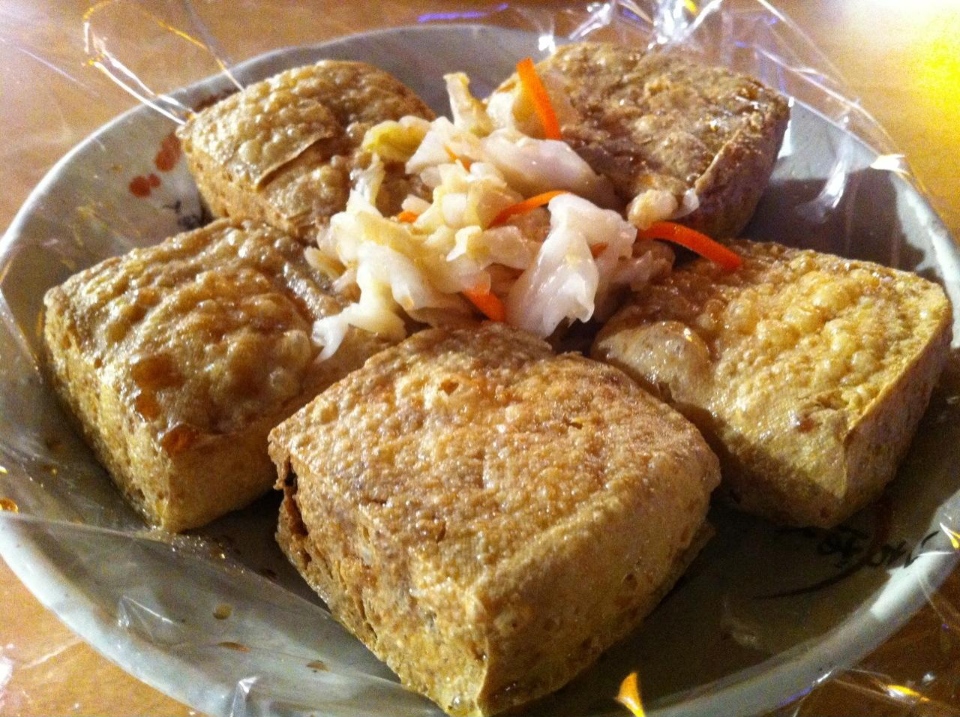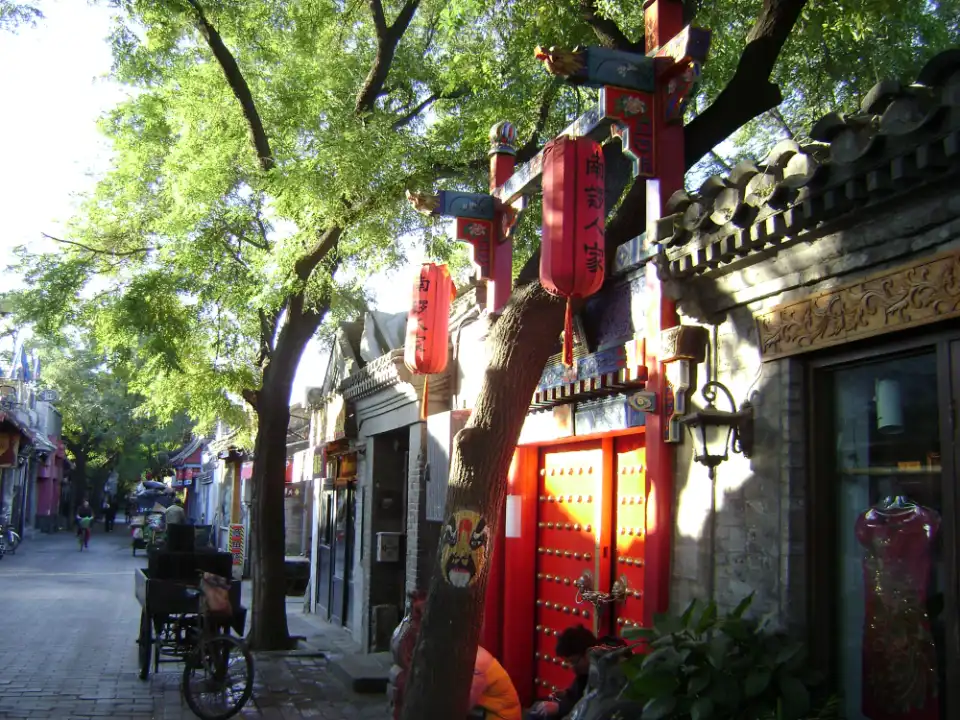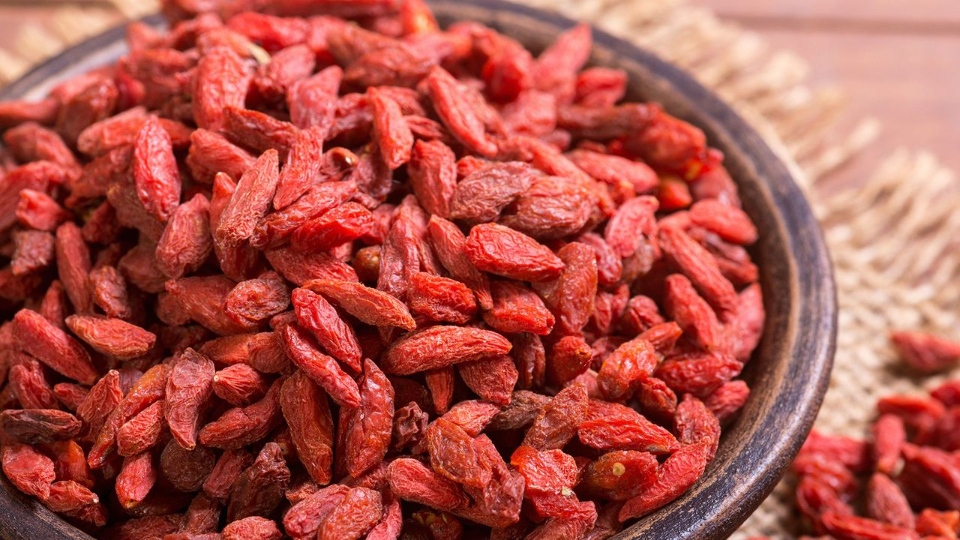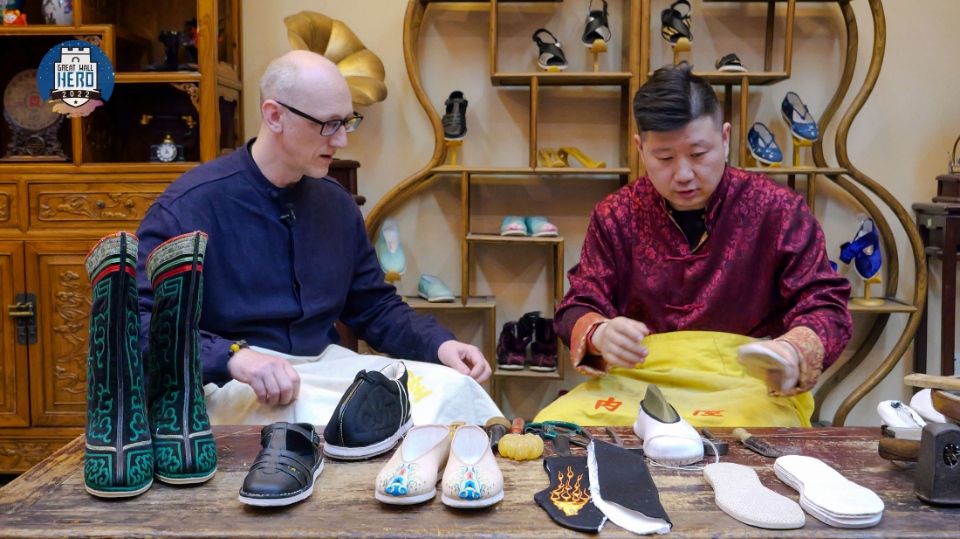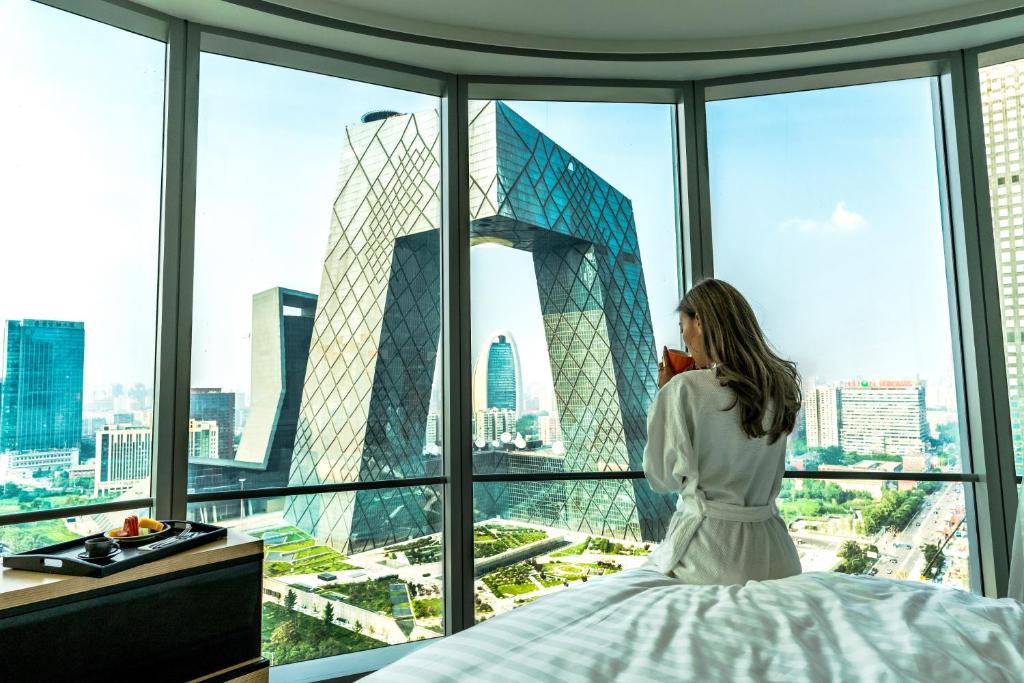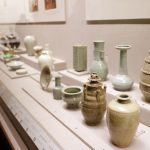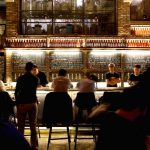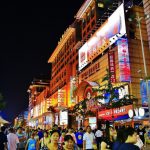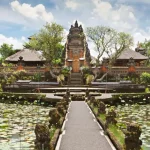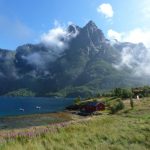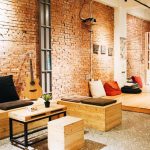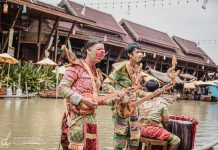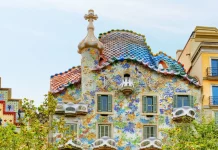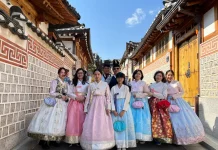If the Forbidden City is the palace of emperors, a place steeped in secret history, then Yiheyuan is a place to enjoy natural beauty in a peaceful, elegant setting. Yiheyuan is also known as the Summer Palace – the resting place to enjoy the scenery of Empress Dowager Cixi.
- What to buy in Beijing? — Top 19+ must-have souvenirs & best things to buy in Beijing
- Top bars in Beijing — 23+ liveliest, cool, good & best bars in Beijing
- What to do in Beijing at night? — 11+ where to go, see & best things to do in Beijing at night
- Guide to Yiheyuan Beijing — The fullest Summer Palace Beijing guide to the China’s most beautiful classical garden
- What to buy in Guangzhou? — 11+ best things to buy in Guangzhou & best shopping places in Guangzhou

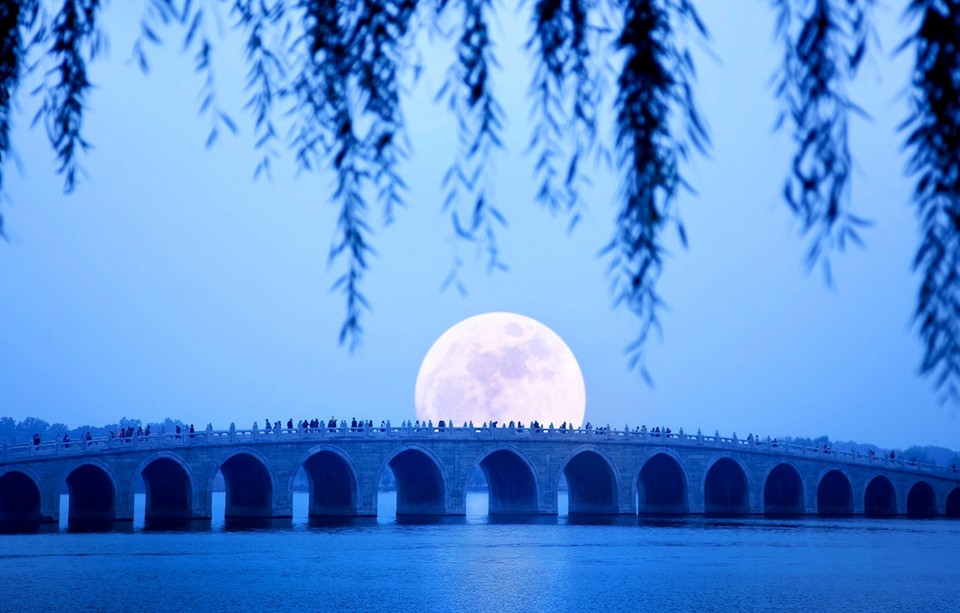
Located next to the majestic Wanshou Mountain and the poetic Kunming Lake, the decoration, ornamental plants, and architecture of this place are worthy of being the cradle of Chinese garden art, and have great cultural significance for the Chinese people. Flowers and the world.

Beihai Park
Address: 1 Wenjin St, 西安门 Xicheng District, China, 100034
Hours: 6:30–9 AM
Beihai Park was built and used during the Yuan, Ming and Qing dynasties. Beihai Park is only used for royal purposes. The park was built in the classic Suzhou garden style.
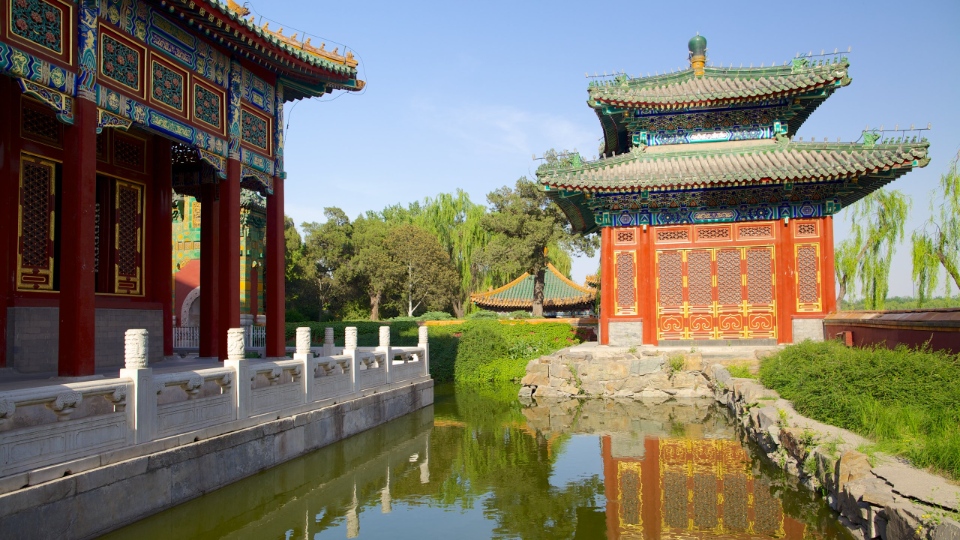
Beihai Park is located on a small island, located in downtown Beijing, northwest of the Forbidden City. It is considered one of the oldest surviving royal gardens in China, this place is truly a green gem in the heart of the city.
The garden art style of Beihai Park represents a wonderful combination of cultural and artistic values. This park became a prime example of the sophistication and perfection of garden art in Chinese culture. Considered a royal garden, Beihai Park was once a favorite destination of ancient Chinese kings and aristocracy.
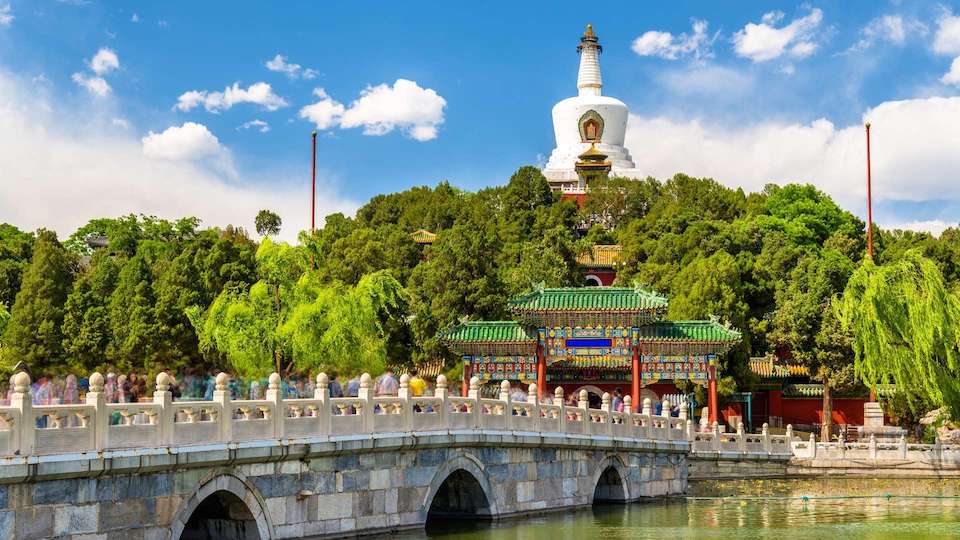
Beihai Park in reality is really beautiful and touching as described in the song. Every winter, Beihai Park is very lively and becomes an outdoor fun spot for many friends of all ages.
Hutong Old Town
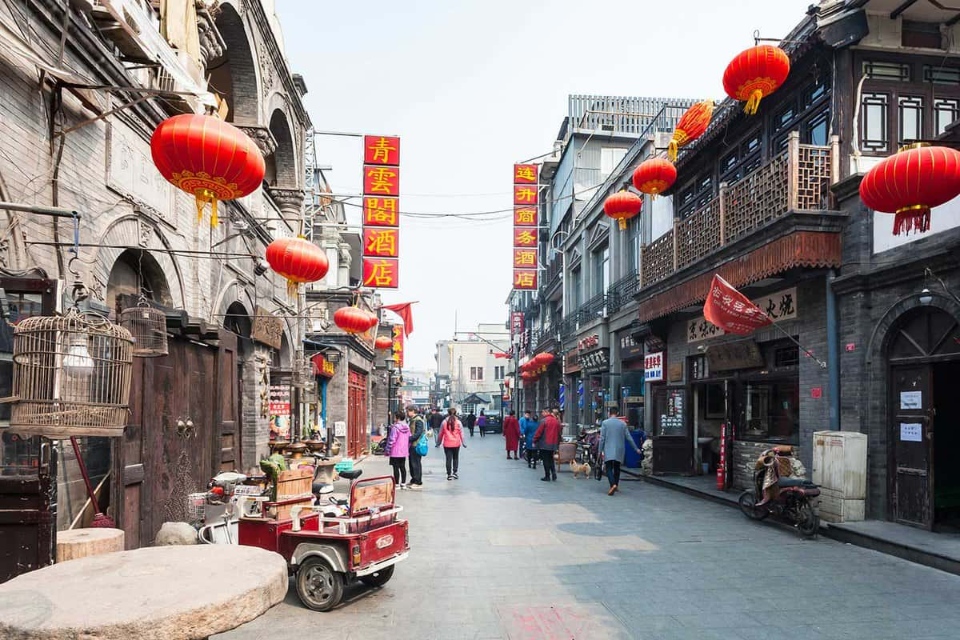
Beijing not only has the most luxurious and magnificent tourist attractions or the most modern buildings, but also hidden in it the small alleys and ancient streets that have existed side by side with the capital for thousands of years. Tourists leisurely renting bicycles here will encounter the old town of Hutong.
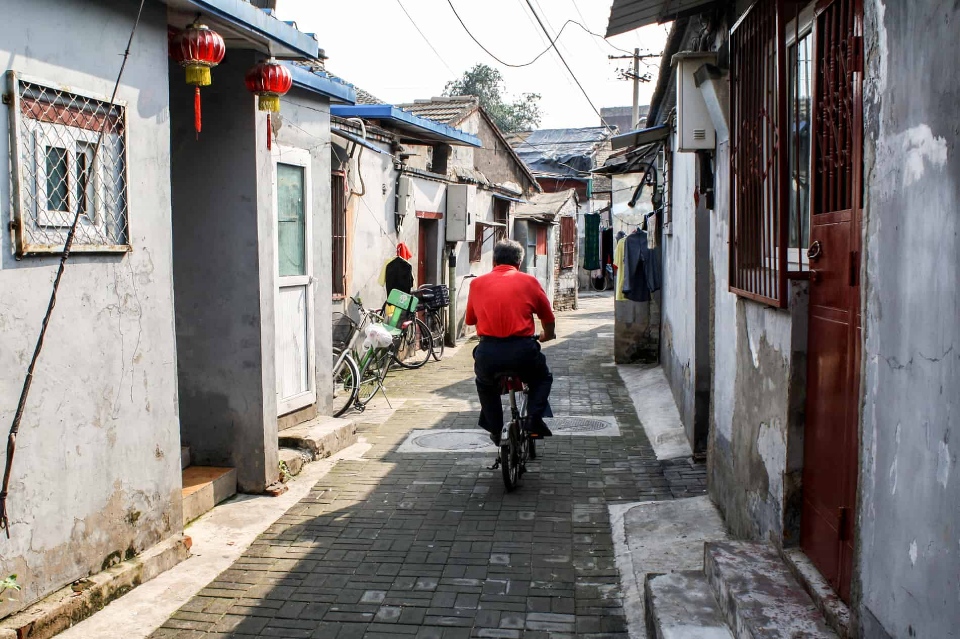
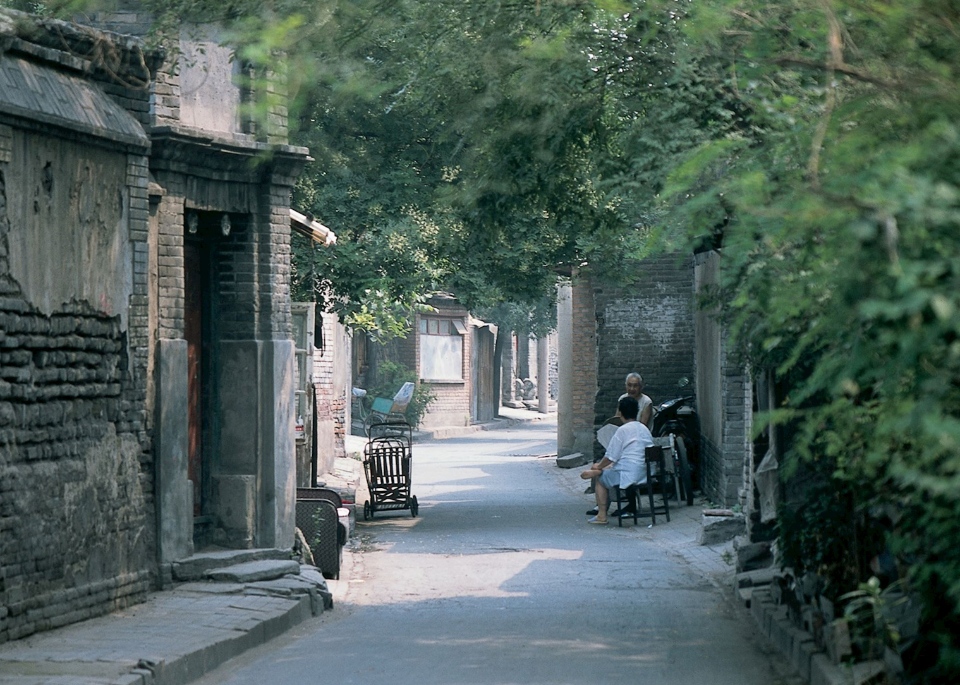
Hutong has small, long, narrow alleys, formed according to Siheyuan architecture (means the term “quadrangle”). Siheyuan are traditional Chinese houses, with a garden, built on 4 sides, in front of the house there is a large yard, a well for living, all daily life is encapsulated in quadrangle. Neighborhoods are formed by many quadrangles connected together, forming Hutong, which then connects with other Hutongs to form settlements like a chessboard. The word Hutong also refers to such neighborhoods.
Lama Temple
Address: 12 Yonghegong Ave, 国子监 Dongcheng, China, 100007
Hours: 9 AM–5 PM
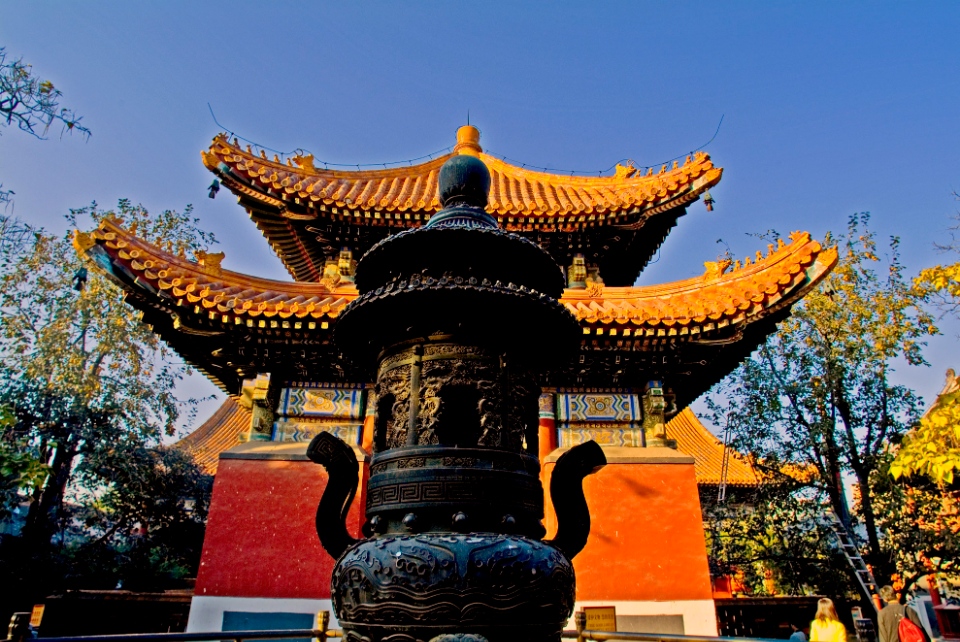
Lama Temple is also known as The Yonghe Temple (Palace of Peace and Harmony), is the unique Tibetan temple in Beijing. Built 300 years ago, it is one of the largest and most important Tibetan Buddhist temples outside of Tibet. Lama Temple was built in the Han-Tibetan style, with a large scale, harmonious and unique architecture, impressive.
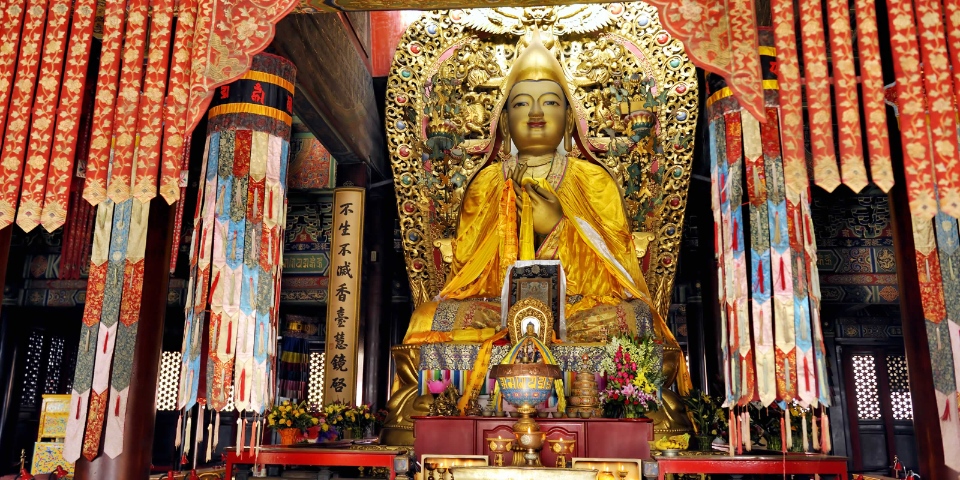
Originally, this place was Palace of Peace and Harmony, built in 1694 for the mandarins in the Qing dynasty to stay. Later became the palace of the Yongzheng emperor. When he ascended the throne, in order to serve the diplomatic relations between the Qing Dynasty and Tibet, a part of Palace of Peace and Harmony became a Tibetan Buddhist monastery. Since then, the Lama Temple has been the place to study for Tibetan Buddhist monks as well as to receive delegations from Tibet. Today, the Lama Temple is a famous sight, attracting many tourists in Beijing.
Jingshan Park
Address: 44 Jingshan W St, 景山 Xicheng District, Beijing, China, 100009
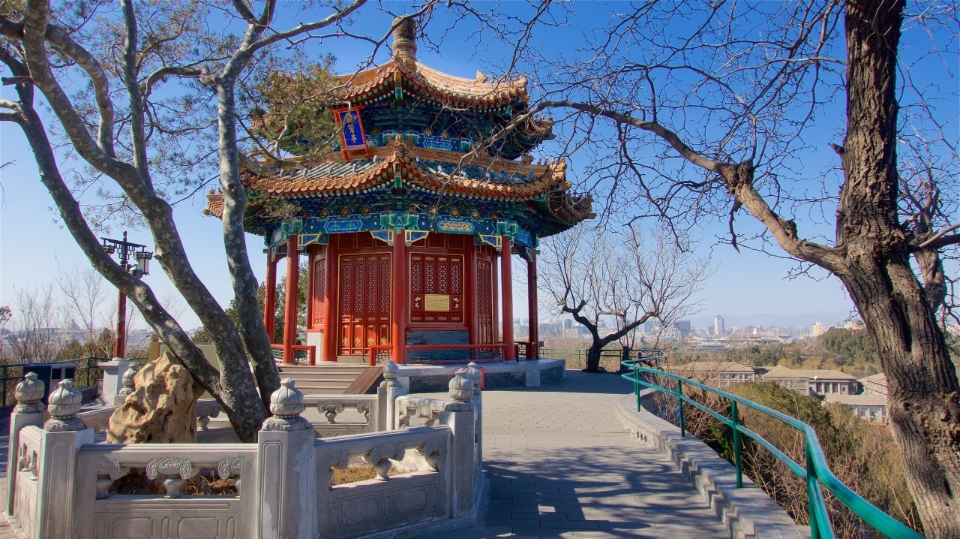
Jingshan Park is always an ideal place for tourists who love nature, especially those who want to stand and enjoy the panoramic view of the Forbidden City. Jingshan Park has a history of more than 800 years, and is the highest point of the central axis of Beijing, north of the Forbidden City, is a royal garden with beautiful scenery, surrounded by red walls, covers an area of 23 hectares.
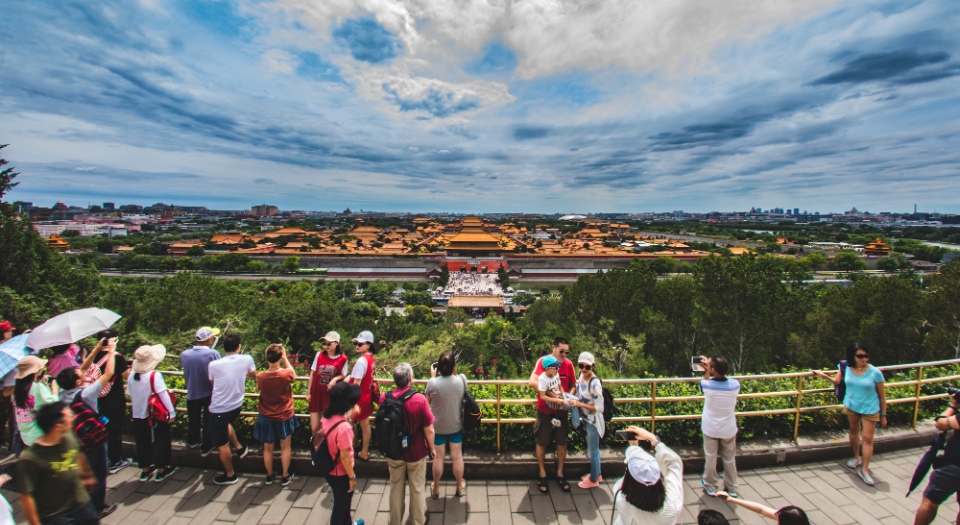
In the park there are lush and towering old pine and cedar trees and you can see the whole city from above. Jingshan Park is located at the central point of the north-south central axis of the ancient city wall of Beijing, to the north of the Forbidden City. This place was originally a forbidden garden of the Yuan, Ming and Qing dynasties. At the same time, this park is also located in the most central location of Beijing. When it was found, Jingshan was a park for the royal aristocracy, later expanded for many people to visit, becoming a large man-made park of Beijing city. There are three garden gates in the main buildings of the park, namely the Jingshan gate, the Shanzuosi gate and the Shanyouli gate.
Yuanmingyuan Park
Address: China, Bei Jing Shi, Haidian District, 圆明园 邮政编码: 100084
Hours: 7 AM–5 PM
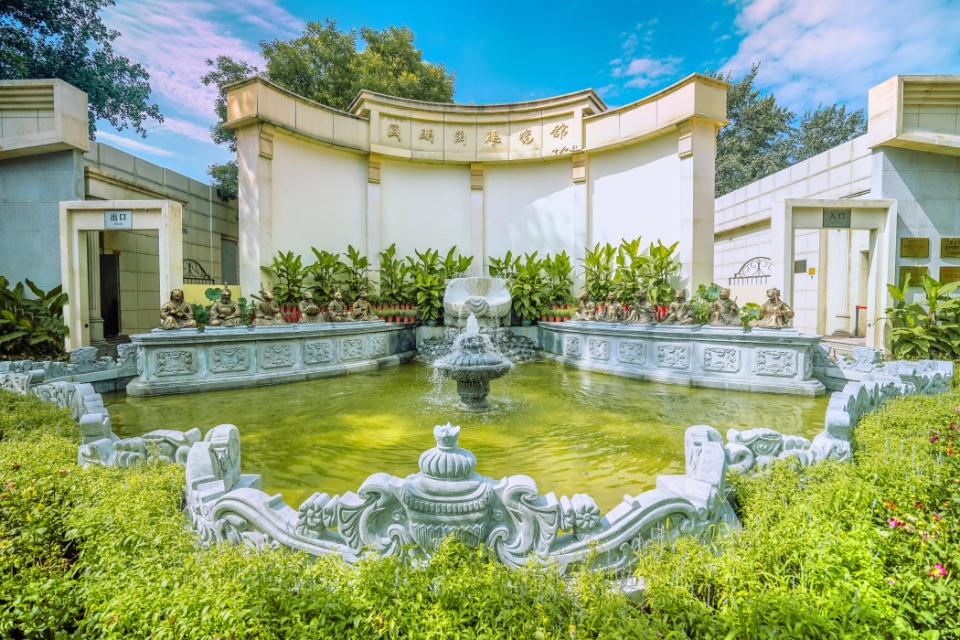
Yuanmingyuan Park, the original name is Yu Garden, is a complex of palaces and gardens built in the 18th century and early 19th century. Located 8 km northwest of the capital Beijing, Yuanmingyuan is also a place where the Qing Emperors lived and ruled. In ancient times, the Yuanmingyuan area was just a place with dense trees. Palaces and temples were then built during the Liao and Jin dynasties. Many palaces were built during the Yuan Dynasty and became increasingly famous in the Ming Dynasty.
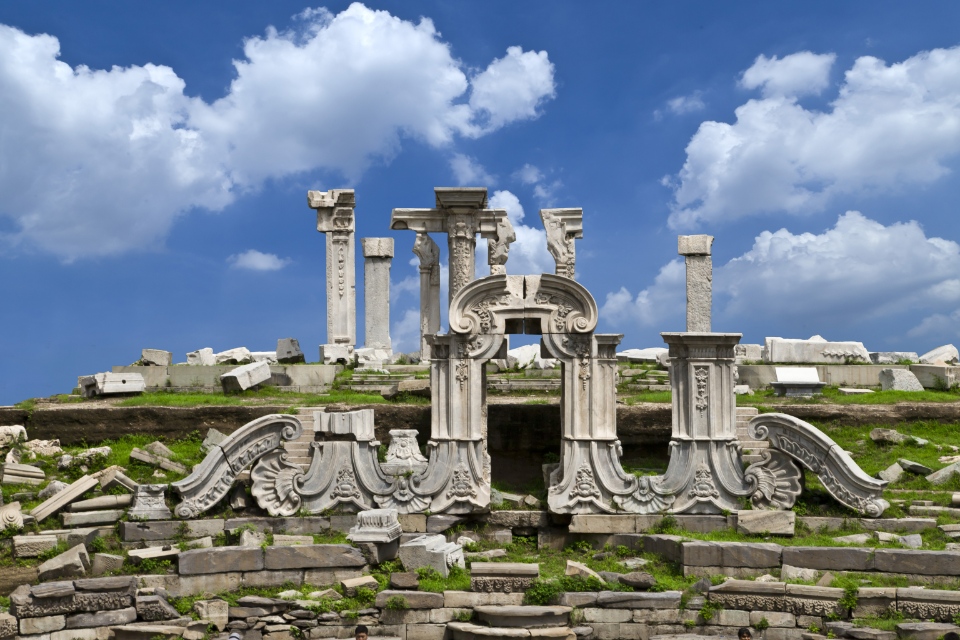
The beauty of Yuanmingyuan in the four seasons always has its own characteristics: spring welcomes the wind, summer sees lotus flowers, autumn enjoys the scenery, and snow pedals in winter. The scenery of the four seasons is beautiful and poetic, and this has an attraction that attracts you to visit Yuanmingyuan at least once in your life. This is a place not to be missed when traveling to Beijing.
Prince Gong’s Mansion
Address: 17 Qianhai W St, Xicheng District, Beijing, China, 100035
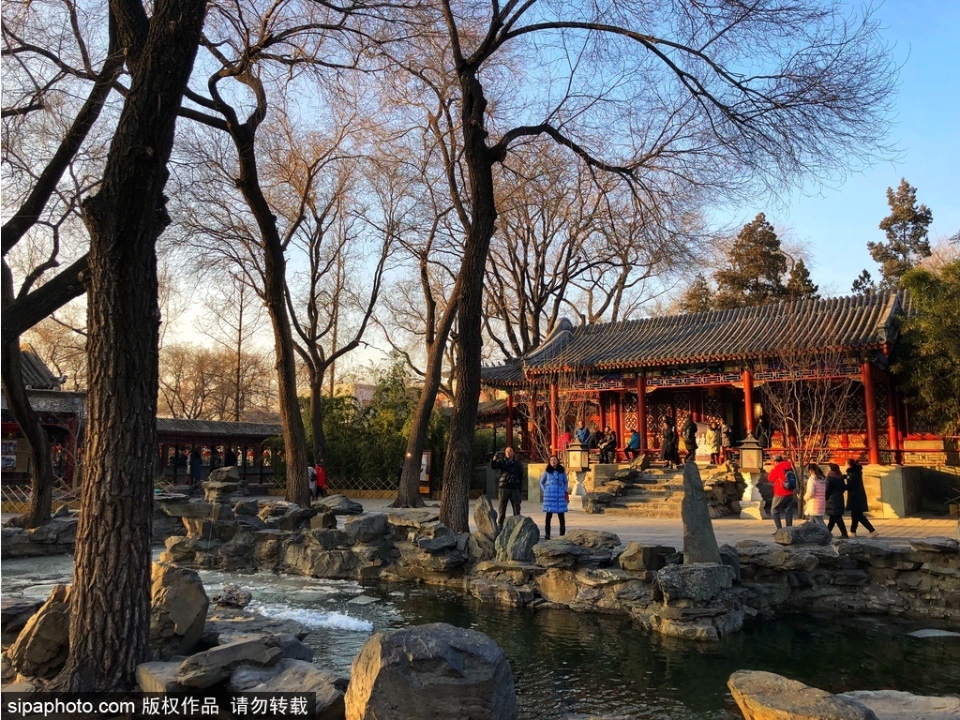
In the southwest corner of Beijing, there is a long quiet street shaded by green willow trees. In this street there is a large mansion, which is the Prince Gong’s Mansion (Prince Kung’s Mansion), one of the best preserved of the existing mansions in Beijing. In 2012, this place was ranked as a national scenic spot.
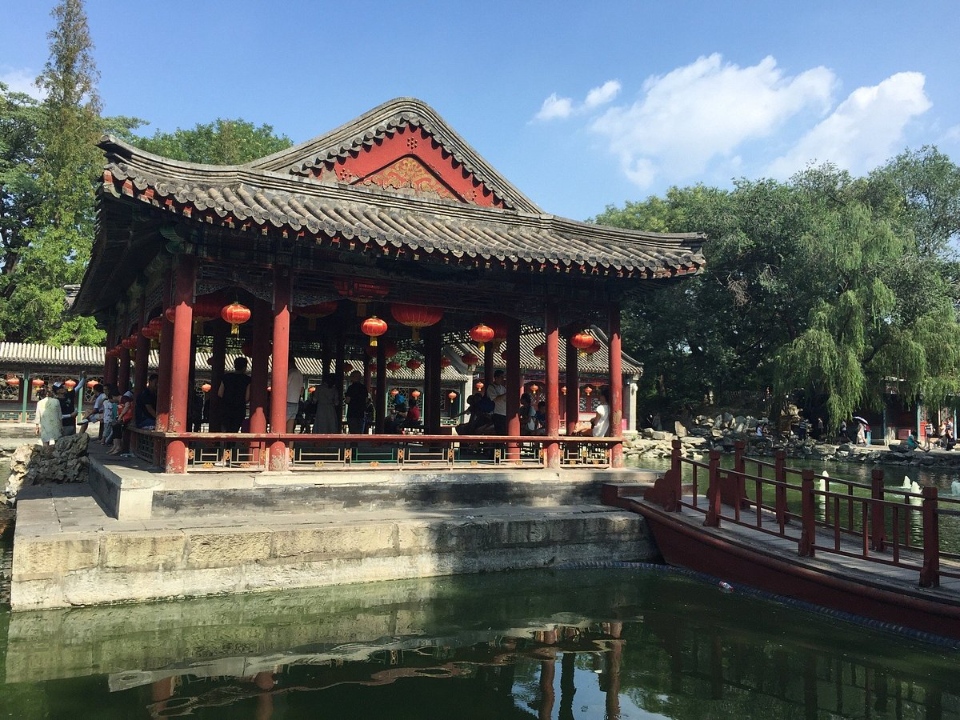
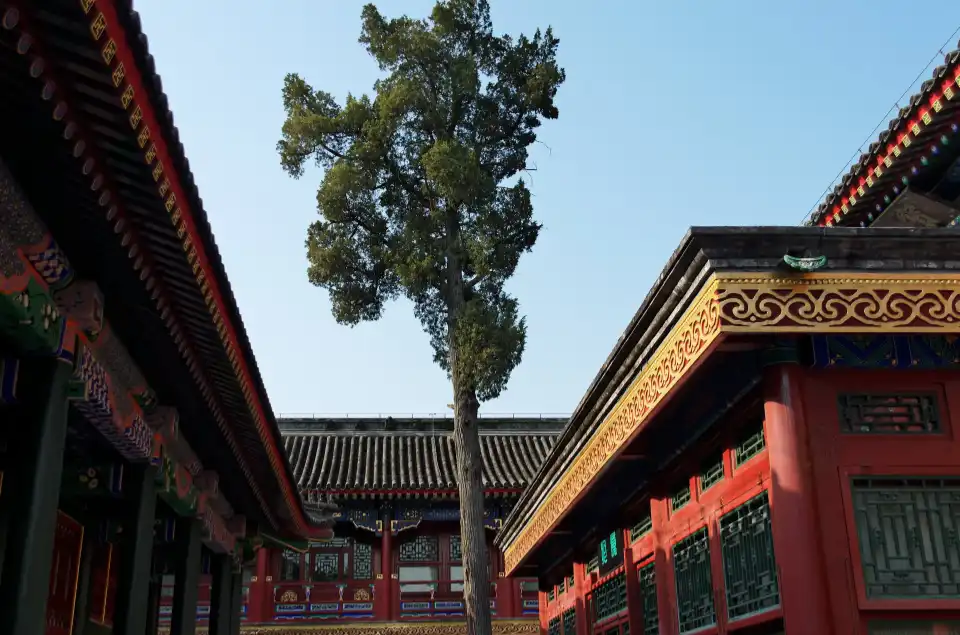
This place is like a priceless treasure, the only feudal relic still intact to this day. The Chinese have a saying: “One mansion, half of the history of the Qing Dynasty” is enough to express the cultural value of this place.
Prince Gong’s Mansion has a formal architectural layout, with excellent craftsmanship and staggered spaces. The overall Prince Gong’s Mansion fully expresses the magnificent and rich royal style as well as the simple and elegant folk style. The mansion consists of two parts, the mansion and the garden, about 330m long from north to south and wider than 180m from east to west.
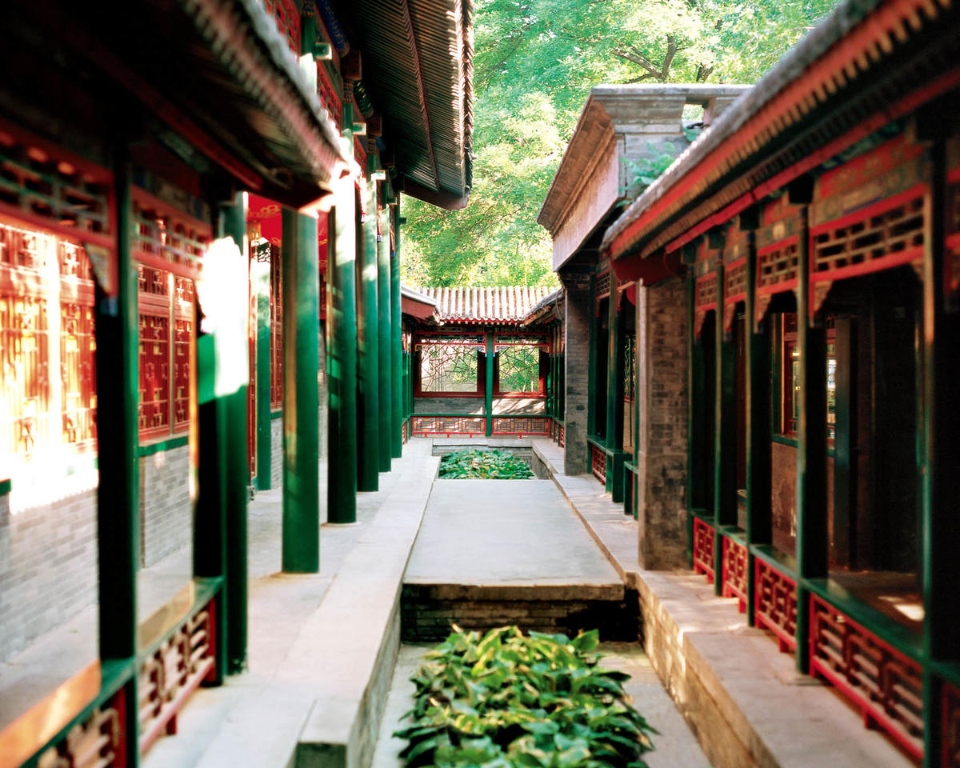
Coming here, you will have the opportunity to understand more about the real life of the mandarins in Qing Dynasty. The vast space of Prince Gong’s Mansion is as majestic as a miniature palace with the most sophisticated architecture.
Wangfujing Pedestrian Street
Address: WC66+9GP, Wangfujing Ave, Dongcheng, Beijing, China, 100006
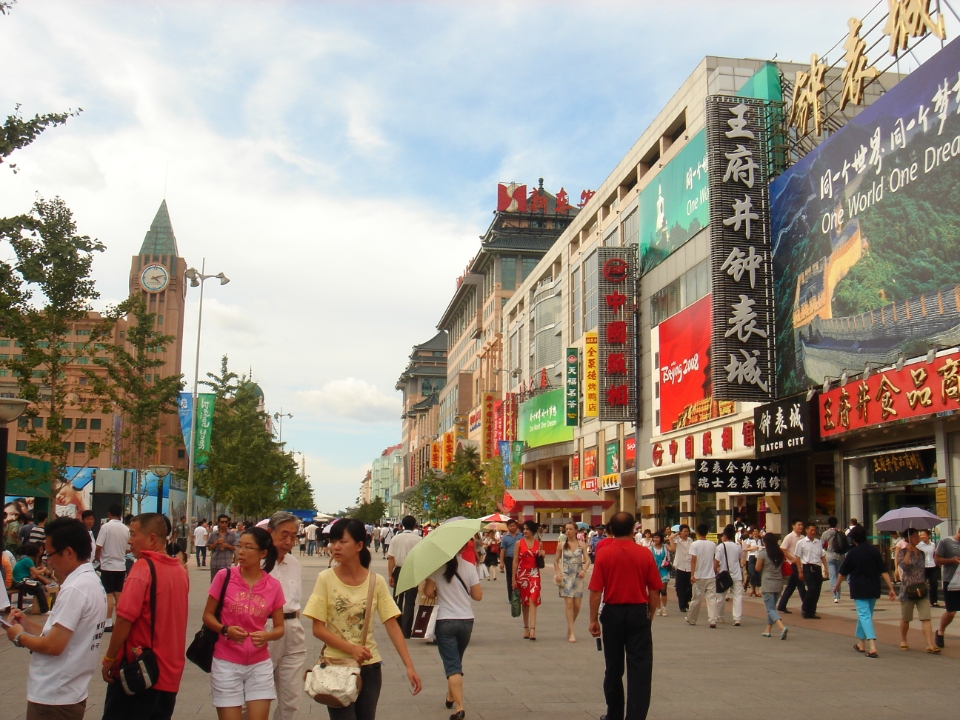
Wangfujing Pedestrian Street has a history of more than 100 years, not only focusing on many international brands but also many long-standing famous brands. This place is also a shopping and dining paradise for Beijing’s youth as it concentrates on shopping and dining places…
Wangfujing during the Ming Dynasty had many mansions of the royal family and princesses, so people called it “Wangfu Road”. During the Qing Dynasty, there was a well on this road. People often lived here, so it was changed to “Wangfujing” (“Jing” means well).
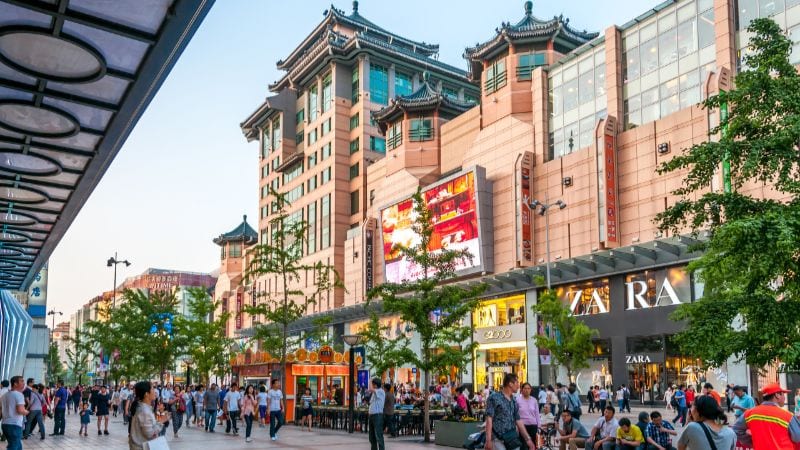
From 1999 until now, this place has been transformed into a shopping street, many of Beijing’s busiest commercial centers have taken this place as their “stronghold”, becoming a characteristic whenever Wangfujing is mentioned. In addition, this place is also famous for its night food area, with many diverse Chinese dishes, served hot on the spot.
Beijing Olympic Park
Address: X9VV+PF8, Chaoyang, China, 100875
Hours: 6 AM–9:30 PM
Beijing Olympic Park: a symbol of the great development of modern China
Beijing Olympic Park is the main venue of the Beijing Olympics 2008. This is the gathering area for Olympic venues including extremely famous arenas such as the National Stadium (Bird’s Nest), the Center National water sports, National Stadium, Science museum… Note: General park admission is free, but if you want to visit separate parts such as Bird’s Nest stadium or Water Cube… you need to separate ticket must be purchased.
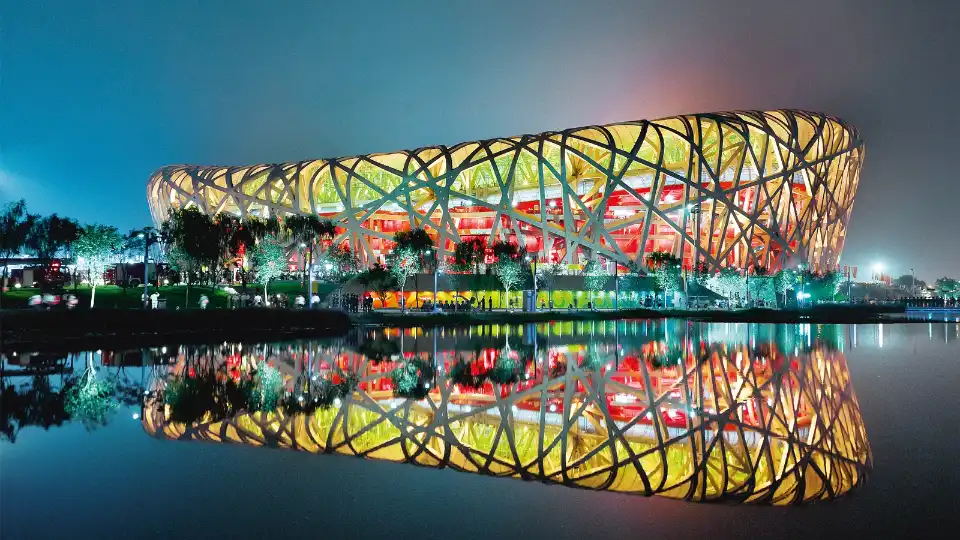
Known as the “bird’s nest stadium”, Beijing National Stadium is a unique architectural wonder of Beijing, a special highlight of every Beijing tour. Construction began in 2001, this stadium can accommodate 91,000 people, and is one of the largest Olympic facilities in the world.
National Centre for the Performing Arts
Address: 2 W Chang’an St, Xicheng District, China, 100031

Also known as the “egg” or “crystal oasis” theater with modern and unique architecture. Inaugurated in 2007, this theater has an entire elliptical dome made of titanium and glass. From a distance, this theater looks like a pearl floating on the surface of the lake. The best time to see the Beijing National Opera House is in the evening, when the theater lights up and shows off all its splendor.
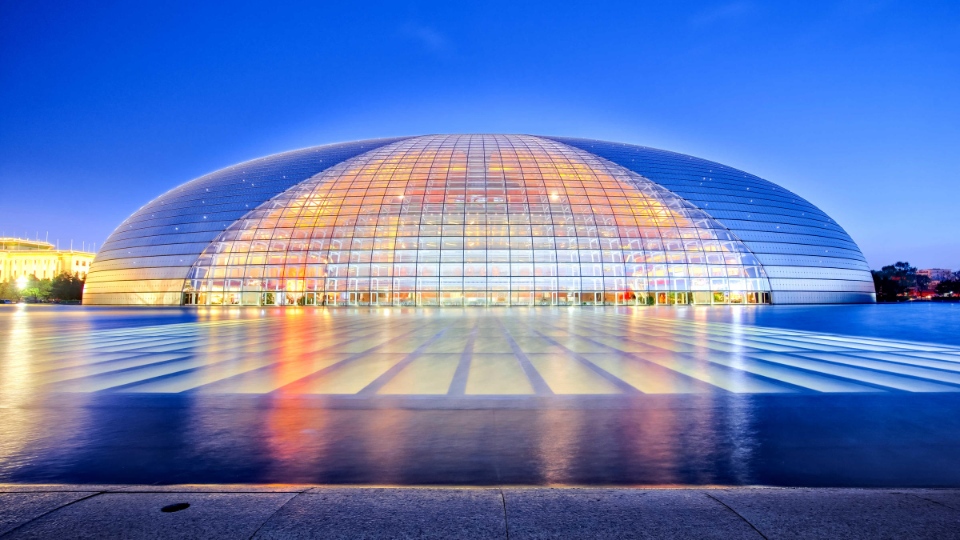
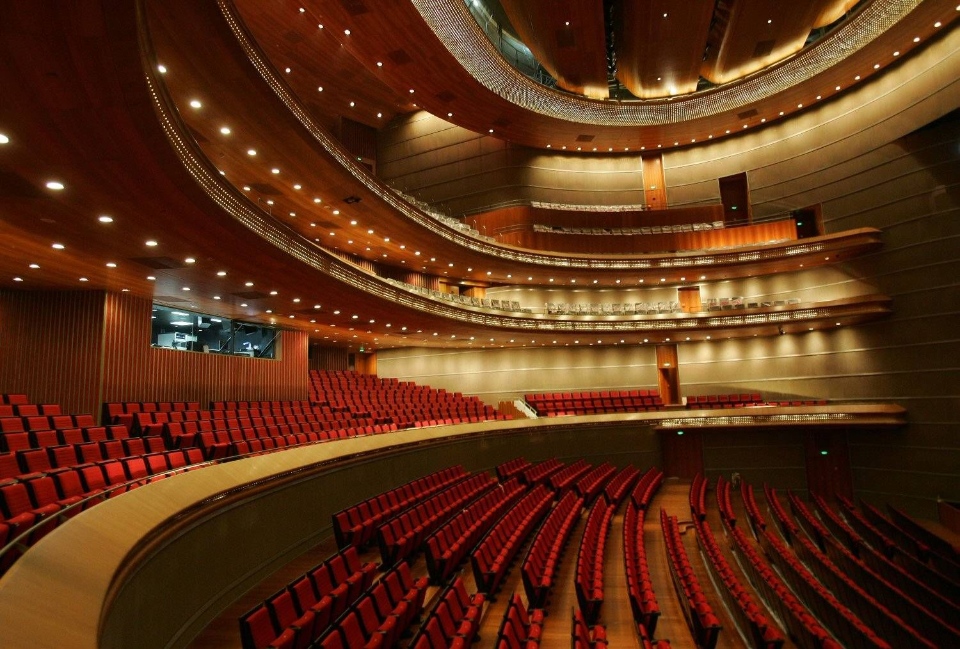
CCTV Headquarters
Address: 32 E 3rd Ring Middle Rd, 呼家楼 Chaoyang, China, 100020
With a height of 405m, this is one of the tallest towers in the world and has a unique and novel architecture. The TV tower is open for visitors to visit with many items: The observation deck – where you can capture the entire view of Beijing, luxury restaurant – where guests dine in the magnificent sunset of Beijing.
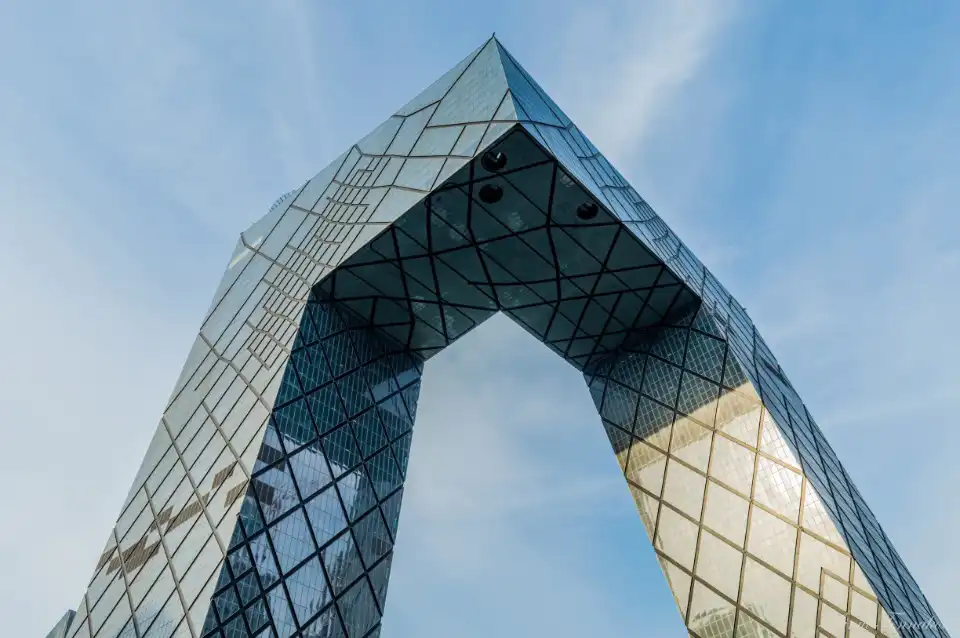
Thirteen Tombs (Ming Dynasty Tombs)
Address: 764F+3C3, Changchi Rd, Changping District, China, 102200
Hours: 8 AM–5:30 PM
The Ming Dynasty Tombs, also known as “Thirteen Tombs” are the mausoleums of the 13 emperors after the Ming Dynasty moved the capital to Beijing. The Ming Tombs is located south of the foot of Tianshou Mountain, Changping District, about 44 km northwest of Beijing.
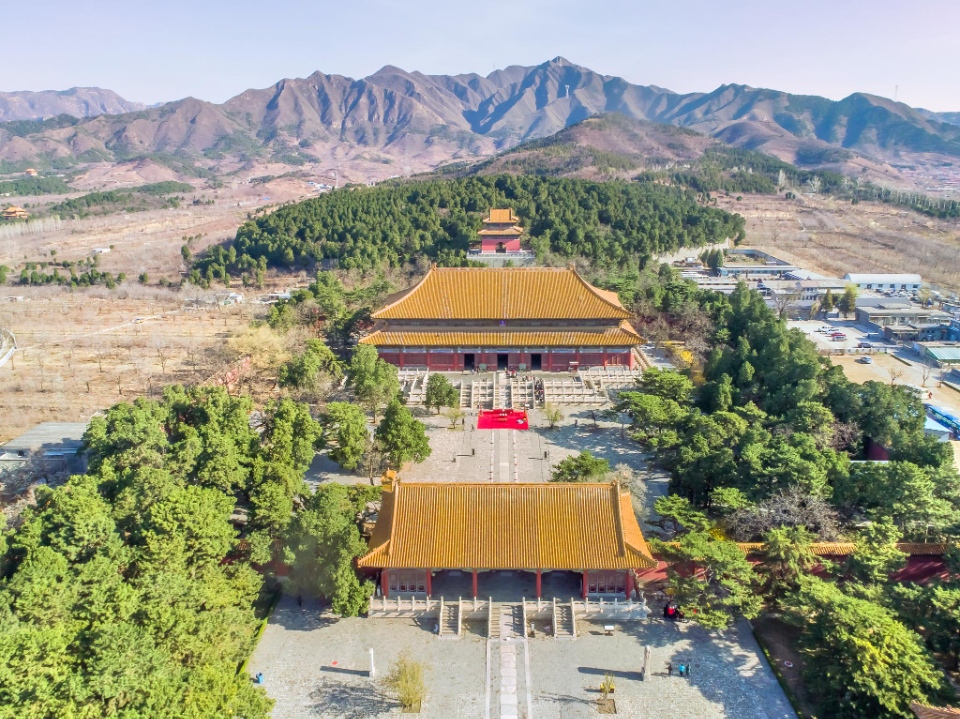
The Thirteen Tombs were recognized as a World Cultural Heritage Site by UNESCO in 2003. The location and architecture of the tombs are classic representations of Chinese feng shui theory.
The natural environment of Ming Dynasty tombs is characterized by being surrounded by green hills, open halls, and meandering streams. The location of each tomb is against the mountain, in front is the lake, surrounded by mountains on the left and right. Compared with mausoleums built on the plain, the natural landscape of this mausoleum is more beautiful, and can more clearly express the majesty and grandeur of the emperor’s mausoleum. The Ming Dynasty Tombs are the best-preserved ancient mausoleums among the emperors and are the burial place of the most emperors in Chinese history.
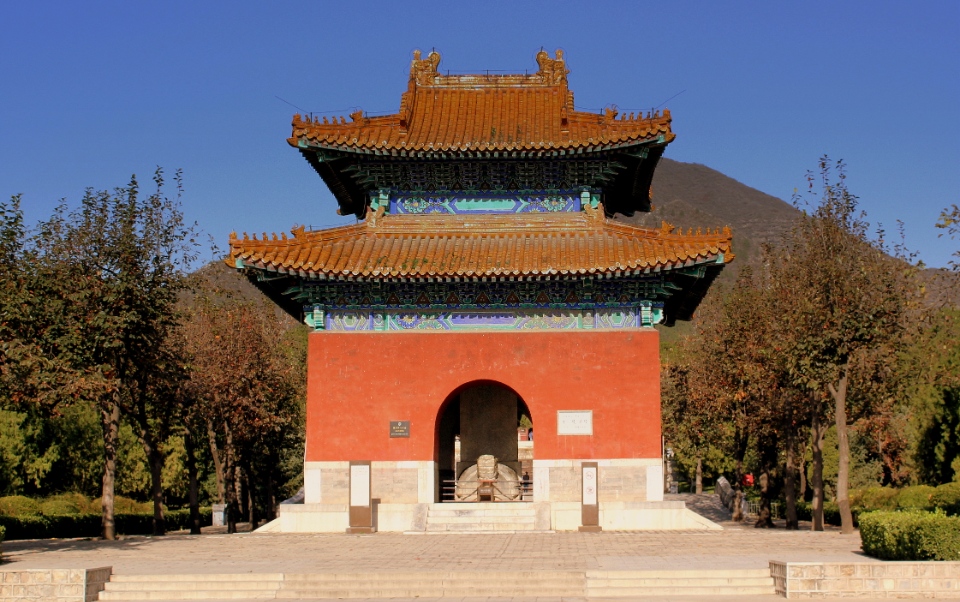
Feudal Chinese also believed that to have another life after death. The Emperor is the richest and most powerful man, living his whole life in the most luxurious and beautiful mansion in China. They want that glory to last even after death. The mausoleum is considered the emperor’s representative hall after his death, so a lot of attention was paid to the location and construction of the mausoleum.
What to eat in Beijing?
Peking Duck
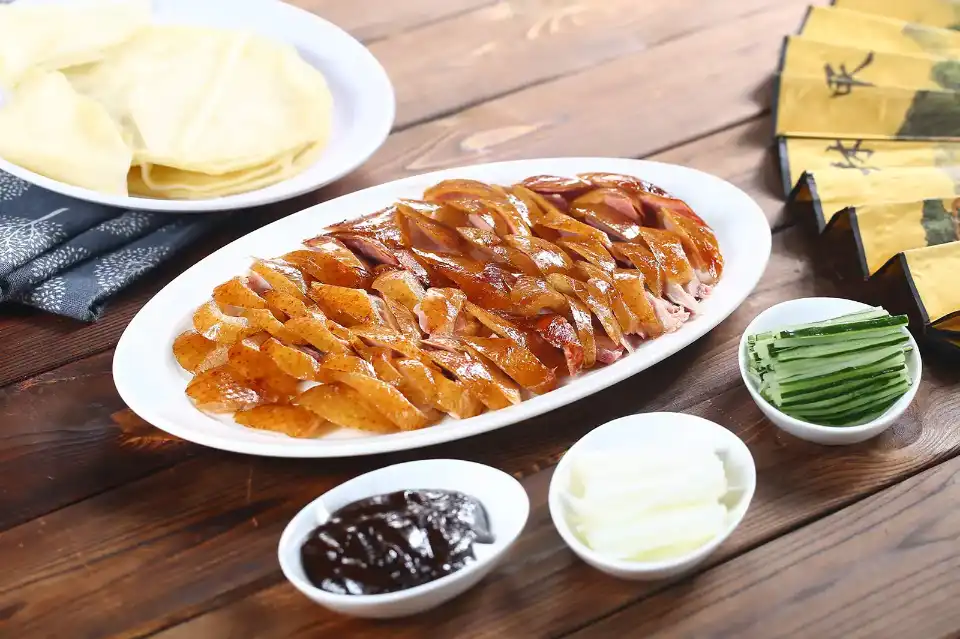
This dish is at the top of the list of Beijing delicacy. Although roasted duck can be found anywhere, the taste of roasted duck in Beijing is sure to be memorable once you eat it, and cannot be confused with other places. The roasted duck here has shiny, golden brown, crispy skin, duck meat inside is still sweet and soft, dip with a special dipping sauce that has viscosity and aromatic spices. Peking duck is a dish that plays an important role in royal banquets.

Peking Style Hot Pot
It is a favorite dish of Chinese people when the weather gets cold. Hot pot has a variety of dipping dishes, which can be lamb, beef, shrimp, fish, vegetables, fresh fruits, beans, mushrooms… The most popular in Beijing is lamb hot pot.

Lamb hot pot: Lamb is a famous dish of Xinjiang and Inner Mongolia, but lamb hot pot is one of the familiar dishes of indigenous people in Beijing. Lamb hotpot dipped in peanut sauce is the traditional way of eating of this dish. (The peanut sauce mixed with minced garlic, coriander, chili and roasted peanuts is the standard Beijing flavor).
Mantou
This is a traditional Chinese dish often eaten during holidays. Dumplings are made from wheat flour, the filling is made from shrimp and pork along with minced vegetables. There are many ways to prepare dumplings such as steaming or boiling. You can enjoy dumplings on any street when traveling to Beijing.
It is a traditional Chinese dish during holidays. Mantou is filled with salt pork, sesame oil, white pepper… fried or steamed and eaten with soy sauce.
Zha Jiang Mian (Old Beijing Fried Sauce Noodle)
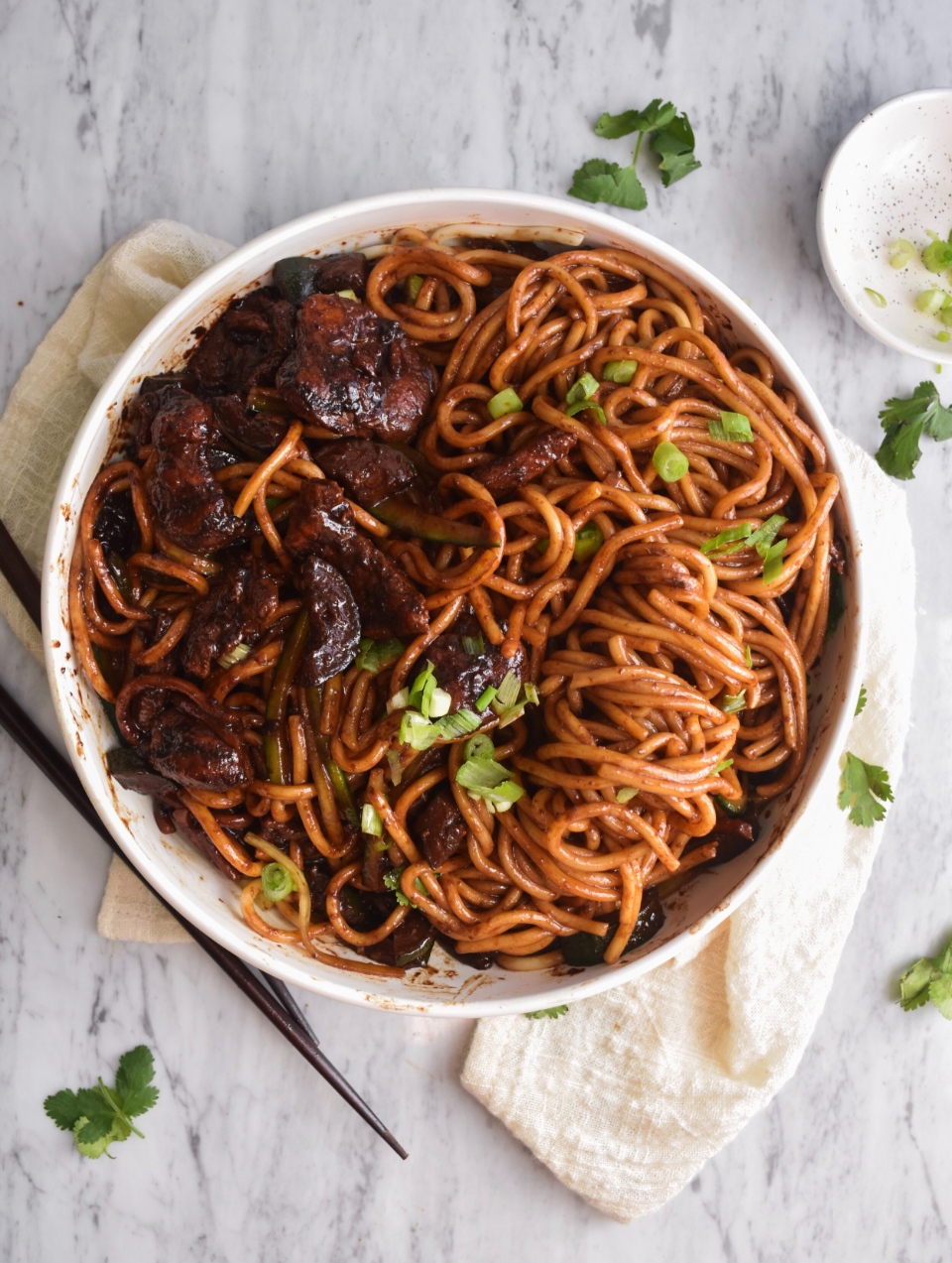
This is a mixed noodle dish similar to Spaghetti in the West. The noodles will be blanched in boiling water until cooked, then drained, then mixed with the sauce and added with some herbs or vegetables to make the dish more fragrant and rich. The special feature that makes this type of noodle delicious is the hot thick sauce with the main ingredients being minced meat sauteed with onions and bean sauces. For those who like spicy food, you can add chili.
Wonton noodles
Wonton noodles are also one of the uniquely delicious traditional dishes in Beijing that you should try. There are many types of wontons such as shrimp wontons, crab wontons, vegetable wontons, mixed wontons… to suit the diverse needs of diners. To make this dish, the chef needs to prepare a pot of broth to simmer the bones with radishes and dried shrimp. Imagine enjoying a hot bowl of wontons with a delicious flavor on a cold day, perhaps no one can resist.
Braised Shark Fin with Fish Maw
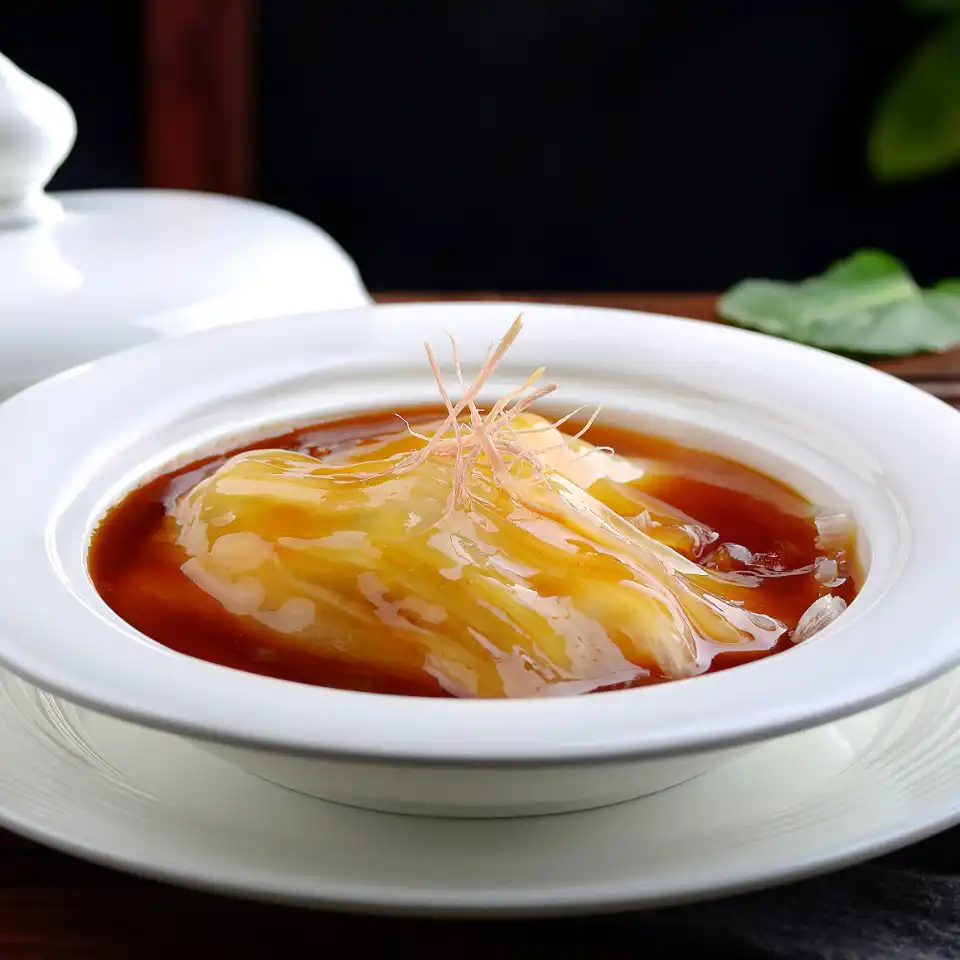
Braised Shark Fin with Fish Maw is a traditional dish of Jin Dynasty cuisine in Beijing’s main cuisine, this is the first dish among the Jin Dynasty dishes, Braised Shark Fin with Fish Maw is a dish that is likened to pellets. The precious gem, the Japanese representative of Tanjia cuisine, ranks first among all dishes made from shark fin. Once a royal dish of the Qing Dynasty, the fin meat after being cooked is soft and fragrant, has a transparent apricot yellow color, is as soft as wax, has an extremely special flavor, the entire fish fin is succulent and seems to melt into the mouth.
Peking Shredded Pork with Sweet Bean Sauce
This is considered one of the unique dishes of Beijing cuisine. Pork after processing will have a moderate sweet and salty taste, rich sauce, and unique flavor. Making Peking Shredded Pork with Sweet Bean Sauce is not difficult, but making the meat soft, smooth and the sauce is evenly mixed is not easy at all. Pork tenderloin will be used as the main ingredient of this dish, and special Beijing yellow sauce and sweet noodle sauce, after processing, the sauce will have a rich flavor and fragrant tender meat, attractive.
Beijing Fried Fish fillet
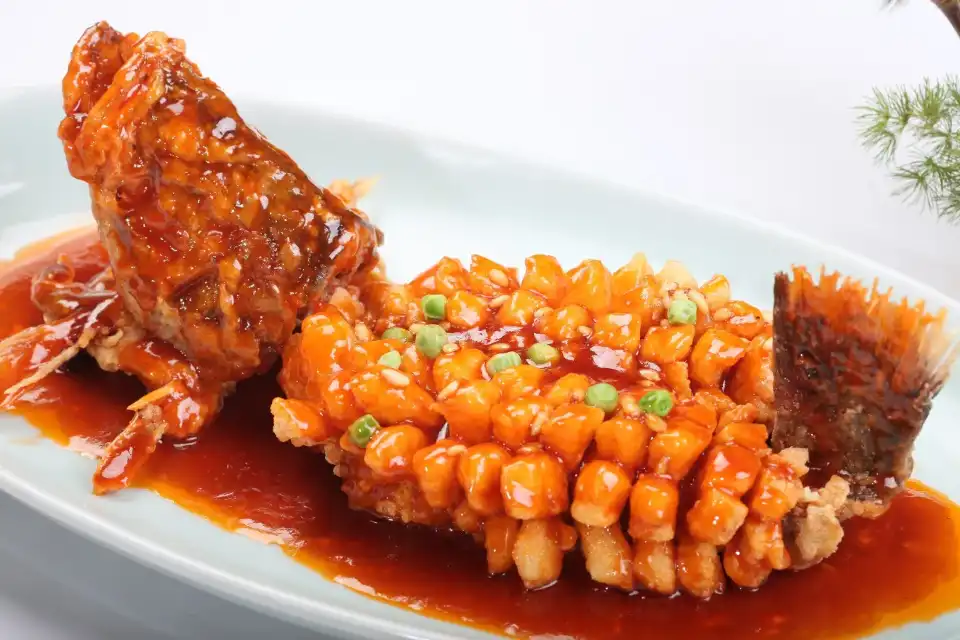
Fried fish fillet is a famous traditional dish in Beijing. This dish is golden in color, crispy on the outside, soft on the inside, greasy and thick. Outside the thick sauce, the boneless fish is fried crispy. When eaten, you will taste the sour, sweet, salty and fresh flavors of the fish. The dish created by Wang Yushan, a royal chef during the Qing Dynasty, was a dish reserved for Empress Dowager Cixi, and was also a must-have dish at royal meals. After that, in turn, more dishes such as “stir-fried filet”, “stir-fried shrimp” and “fried kidney” will be born combined with “fried fish fillet”.
Grilled sea cucumber with green onion

This is a famous dish in Yantai, Qingdao, Jiaodong Peninsula, Shandong province, belonging to Shandong cuisine. It is one of the “Eight Treasures of Ancient Times”, has a sweet fragrance, rich nutrition, and helps nourish the lungs and kidneys. After sea cucumbers and green onions were introduced to Beijing from Shandong, Wang Shizhen, a famous chef from the older generation at Fengzeyuan restaurant in Beijing, made improvements, aiming at the strong properties of sea cucumbers, he used thick sauce to put in the sea cucumber. After grilling, the dish has an extremely attractive aroma, achieving the effect of color, flavor, shape, and beauty.
Stinky tofu
It is a favorite dish of many locals. Stinky tofu is made by fermenting tofu. When served to diners, the stinky tofu will be fried until golden brown, sprinkled with sauce and served with cilantro.
Tanghulu (Candied fruit)
Candied fruit is the most famous snack in Beijing that you can easily buy them to enjoy. This type of candy has a filling made from chestnuts, kumquats or hawthorn, the shell is made from seasonal fruits. This eye-catching candy color is not only said to bring good luck but is also used as a remedy for gastrointestinal diseases.
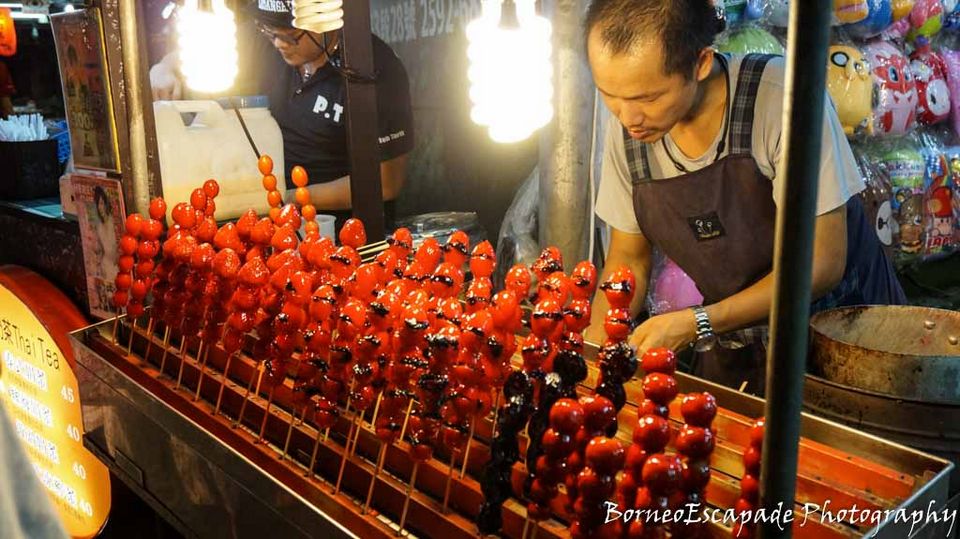
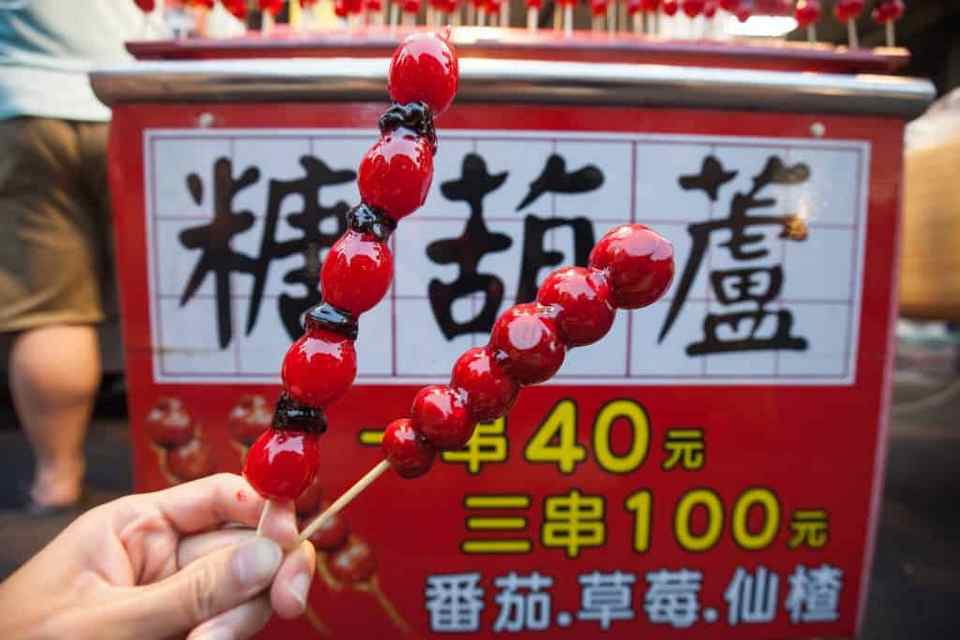
Not only apples, this is an attractive snack made from fruits. Strawberries, pineapples, apples, grapes, plums… are stir-fried with sugar and then skewered onto bamboo sticks.
Malatang (Spicy numbing hot soup)
This is a dish that tourists can encounter in a street cart or a small restaurant, anywhere, anytime in Beijing. Sellers will display large aluminum trays containing spicy broth. The ingredients for making broth are usually chili, star anise, cinnamon, pepper and many other spices depending on each stall. People will put meat and vegetable skewers into that broth tray, and then count the skewers and pay for them after eating.
Dipping skewers (Malatang) of Beijing and the northern provinces of China are meats, vegetables… skewered into small sticks dipped in broth (spicy or non-spicy). When eating with dipping peanut sauce. This dish is sold in all streets and alleys in Beijing, especially in university gates where there are many students.
Chinese Tea Eggs
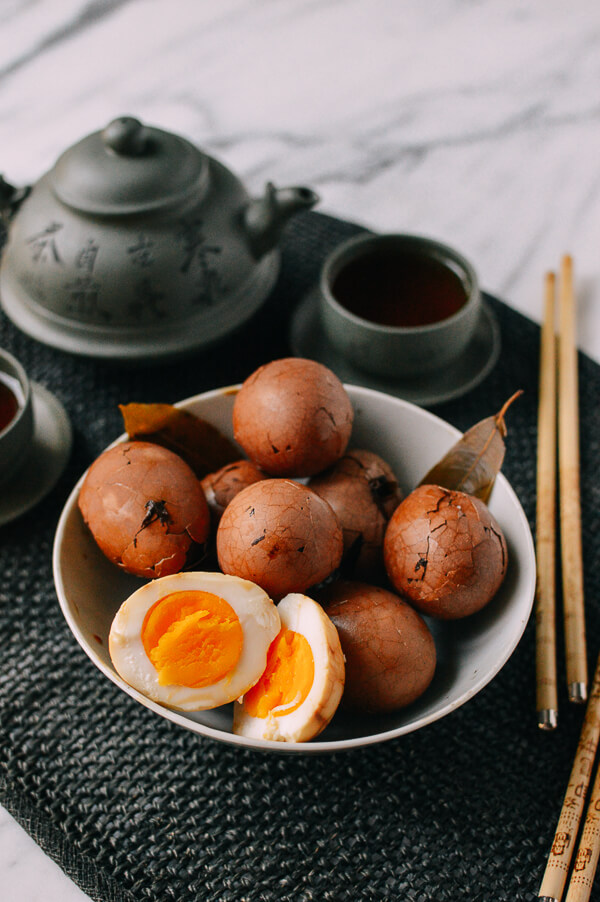
Instead of ordinary boiled eggs, this type of tea egg is mixed with cinnamon, alum sugar, herbs, so when boiled, it has a very fragrant smell. After soaking in the egg, the shell will be separated and continue to boil. This dish is not only delicious and sweet, but also extremely nutritious.
What to buy in Beijing?
Coming to Beijing, shopaholics cannot ignore the busiest shopping places. From commercial centers to popular markets, each place gives you different experiences.
China World Mall is a modern luxury shopping district with high-end brands, it is the largest shopping mall in Beijing. There are also other high-end services such as beauty care, bars and restaurants, entertainment services.
If you want to shop for cheaper items, you can visit Hongqiao market. This is the largest market in Beijing where you can find any item here. From fashion items, souvenirs, toys to electronic items. If you want to discover food, you can go to Vuong Phu Tinh Street to enjoy countless delicious dishes as well as entertainment here. Items you can buy as gifts are: handicrafts and antiques, tea – a famous drink of the Chinese, Chinese silk or pearls…
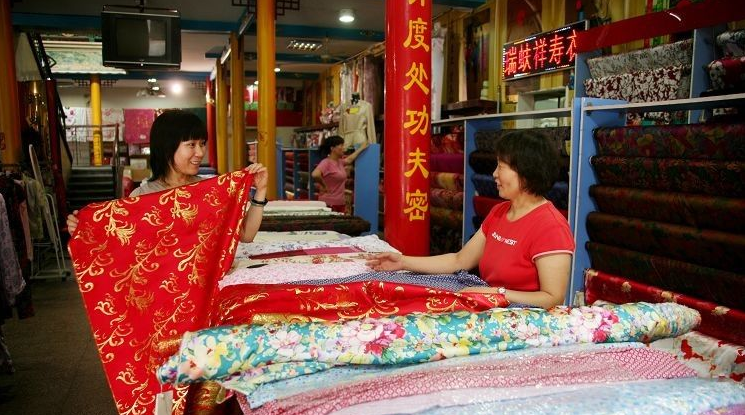
Here, we have detailed compiled about what to buy and where to shop in Beijing, read the article.
Where to stay?
You can find rooms in Qianmen area, where transportation is convenient and hotel and homestay prices in this area are also more stable (fluctuating around 300 yuan). If you want to find cheap hotel rooms in Beijing, you can go to some areas near the beginning of the subway stations such as Xizhimen and Songjiazhuang areas. Although it is a bit far from the center, the traffic is very convenient, only about 30 minutes to the center.
Below we recommend more best budget, mid-range and upscale hotels with good ratings and reviews you can refer to.
- Hotel Eclat Beijing (Agoda, Booking)
- NUO Hotel Beijing (Agoda, Booking)
- Grand Millennium Beijing (Agoda, Booking)
- New World Beijing Hotel (Agoda, Booking)
- Shangri-La Beijing (Agoda, Booking)
- JEN Beijing by Shangri-La (Agoda, Booking)
- Park Plaza Beijing Wangfujing (Agoda, Booking)
- The Opposite House (Agoda, Booking)
Check out more top & best hotels in Beijing on Agoda.com or Booking.com
Some best day tours, trips, activities and transfer services, tickets in, from and to Beijing you can refer to
- Beijing Palace Museum Ticket (The Forbidden City)
- [Cool Summer] Universal Beijing Resort Ticket
- [Sale] Mutianyu Great Wall Day Tour from Beijing (With Pick Up)
- Summer Palace (Yiheyuan) Admission Ticket in Beijing
- [Up to 20% Off] Private City Transfers for Mutianyu Great Wall in Beijing
- Mutianyu Great Wall Day Tour by Bus with Options
- [Sale] Mutianyu Great Wall-Downtown Beijing Round Trip Bus Pass
- Mutianyu Great Wall Ticket & Cable Car
- The Old Summer Palace (Yuanmingyuan) Ticket in Beijing
- Beijing Wildlife Park Admission Ticket
- Beijing Happy Valley Ticket
- CMHK | HK 7 Days unlimited data + 200 HK Local Mins + 1GB Mainland China and Macau data (HK Airport Pick Up)
- [Thailand Pick Up] Dtac GO INTER SIM Card Zone 1(Asia, Australia, USA, exclude Thailand)
- 4G LTE WiFi (MNL Airport Pick Up) for Asia
- 4G Portable WiFi (Manila Delivery) for Asia
- [Unlimited Data] 4G Portable WiFi for Mainland China, Hong Kong and Macau from Uroaming (HK Airport Pick Up)
- 4G WiFi (HK Airport Pick Up) for Hong Kong/Macau/China (No Speed Limited) from Song WiFi
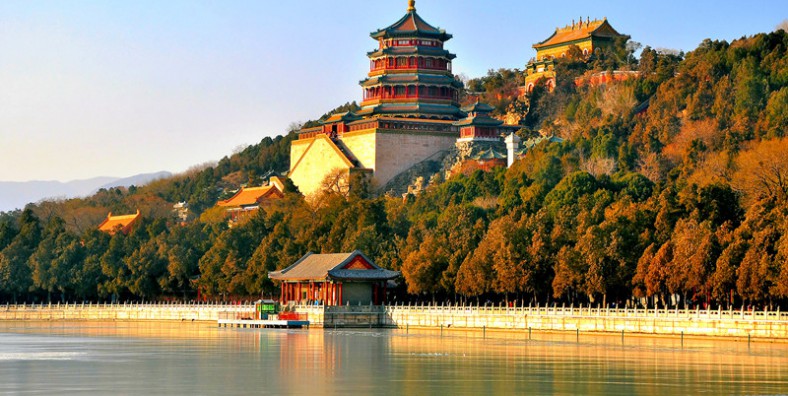
Read more China guide here.
































